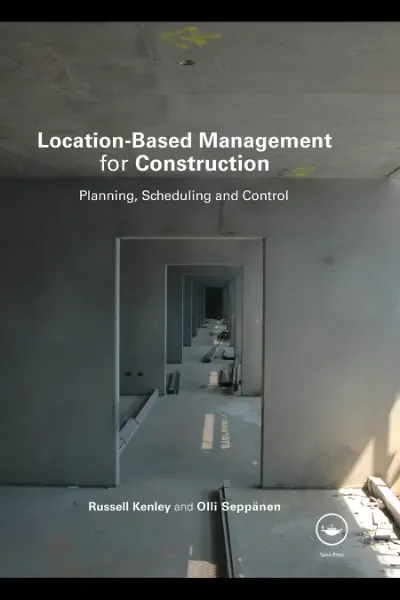Download Location Based Management For Construction Planning Scheduling And Control By Olli Seppanen And Russell Kenley Easily In PDF Format For Free.
This Book Introduces A New Way Of Thinking About The Management Of Construction Projects. As Such It Is Expected To Challenge Existing Beliefs, Strategies And Practices. The Concepts Presented Here Deliberately Argue For A Better Way To Manage, And Therefore Implicitly Appear To Criticise The Way Construction Projects Are Managed Now.
As Such It Will Be Confrontational To Many, And Unfortunately It Will Be Ignored By Some. It Is Difficult To Write A Book About The Location-Based Management System Without Appearing To Attack, Or At Least Dismiss, The Value Of Existing Activity-Based Management Systems. The Problem Is That Most Practitioners Feel Very Sensitive About, And A Degree Of Loyalty To, The Way They Currently Do Things. Some Readers May Therefore Take Umbrage With And Reject Our Arguments. This Is Understandable Given Their Years Of Hard Work Spent Learning And Developing Proficiency In Current Techniques. It Has Certainly Not Been Our Intention To Cast A Poor Light Upon Existing Systems. Indeed, The Dominant Activity-Based Management Systems Of The Construction Industry Are Well Developed And Extremely Valuable, Adding Enormously To The Success Of The Industry And Dealing With A Considerable Amount Of Complexity And Confusion.
It Is Merely That, By Highlighting The Advantages Of The New Approach, It Is Unavoidable To Point Out Faults In The Existing Approaches. If We Are Saying We Have A Better Way, Then We Are Also Saying That The Old Way Is Not As Good. We Would Therefore Like To Take This Opportunity To Apologise To Those Who Take Our Message Of Change As A Personal Affront. We Target The System Not The Individual. While We Advocate A New Location-Based Management System, This Has Much In Common With Existing Practices. Indeed, There Is Much That Will Be Familiar To Practitioners,Despite Key Differences. Our Request Is That You Bear With Us And Consider The Arguments. Do Not Be In Haste To Dismiss. If, After You Have Considered All The Arguments You Remain To Be Convinced, Then We Will Understand. However, If You Can See The Value In The Message, Then Welcome Aboard.
The Challenge Of Mastering A Whole New Management System Should Not Be Underestimated. At The Same Time, It Can Be Great Fun! A Book Such As This Should Never Be Seen As The Work Of Just The Authors, But Rather The Culmination Of The Continuing Work Of Many People Over A Long Period. While The Locationbased Management System For Construction Is Presented Here In Its Entirety For The First Time, Many Of The Components Will Be Familiar To Those Who Have Explored Beyond The Critical Path Methodology (CPM).
For Example, The Underlying Management Philosophy May Be Understood To Be Derived From The Lean Construction Community And Others Operating At The Leading Edge Of Construction Thinking. Location-Based Techniques Include Methods Which Would Be More Familiar To Most Under The Terms ‘Line-Of-Balance’, ‘Repetitive Scheduling Method’, ‘Linear Scheduling’ Or ‘Flowline’, Etc. Construction Management Educators Have Ordinarily Covered Such Topics Within Their Curriculum. As A Rule Of Thumb, Anyone Educated Before 1980 Will Have Applied Such Techniques To Manually Schedule Projects As Part Of Their Training. Further, They Will Frequently Have Used Them On Real, Usually Repetitive, Projects At Some Time In The Intervening Years. Yet This Knowledge And These Efforts Will, Even By Them, Be Dismissed As An Experiment. The Reliance On Manual Techniques, Physically Drawing Lines On Grid Paper, Has Largely Prevented Any Serious Development Of The Techniques Beyond Special Or Academic Needs. We Both Encountered Such Techniques At University, And Must Acknowledge The Thought Leadership Provided. Key Influences Include Walter Mohr And Professor Kankainen.


Comments
Post a Comment